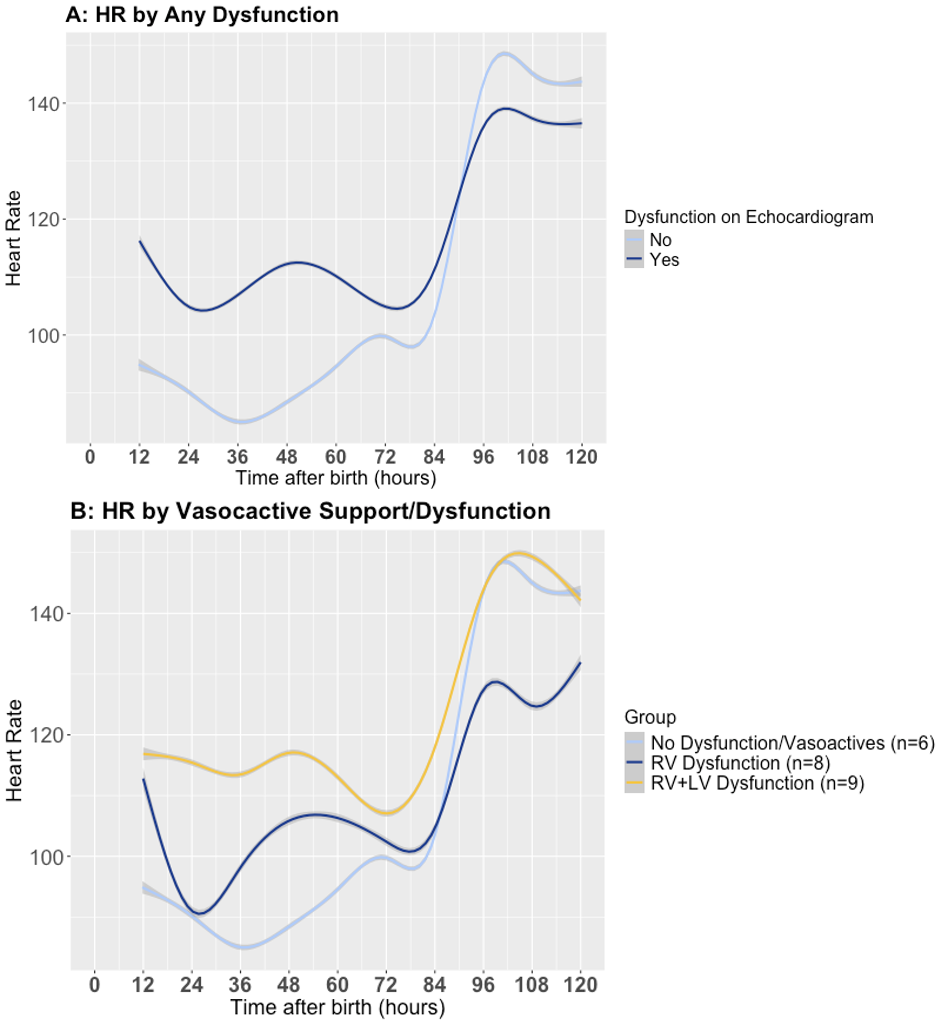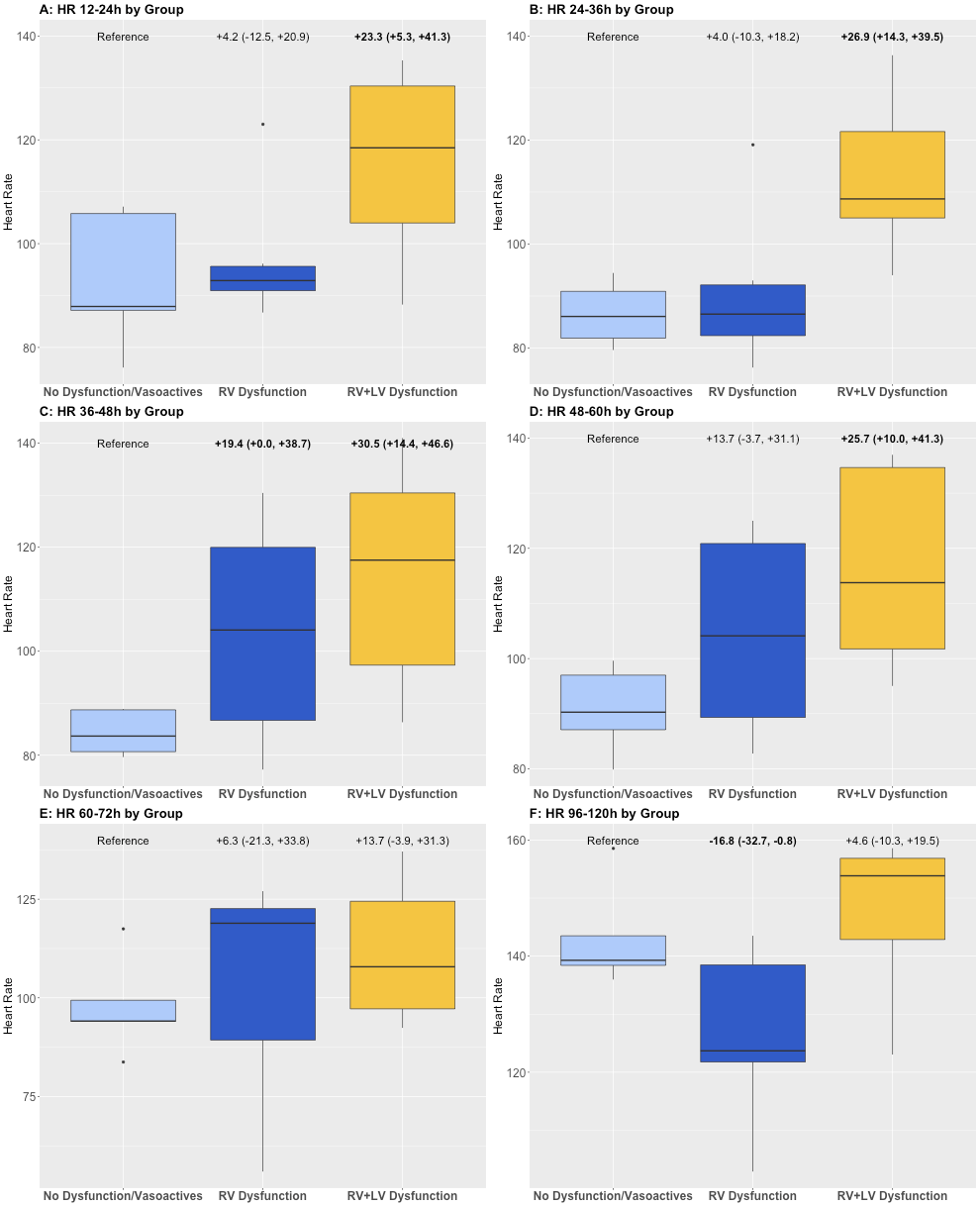Neonatal Hemodynamics and Cardiovascular Medicine 4
Session: Neonatal Hemodynamics and Cardiovascular Medicine 4
085 - Heart rate as a proxy for cardiac dysfunction in neonates treated with therapeutic hypothermia for hypoxic-ischemic encephalopathy
Saturday, April 26, 2025
2:30pm - 4:45pm HST
Publication Number: 85.5456
Janessa Law, University of Washington and Seattle Children's Hospital, Seattle, WA, United States; Thomas R. Wood, University of Washington School of Medicine, Seattle, WA, United States; Ruoyi Liu, Seattle Children's, Seattle, WA, United States; Olivia C. Brandon, University of Washington: Magnuson Health Sciences Center – RR 544A, Seattle, WA, United States; Niranjana Natarajan, University of Washington School of Medicine, Seattle, WA, United States; Mark Wainwright, University of Washington School of Medicine, Seattle, WA, United States; Kendell German, University of Washington School of Medicine, Seattle, WA, United States; Cailin White, University of Washington School of Medicine, Seattle, WA, United States; Sandy Johng, Seattle Children's Hospital, Seattle, WA, United States; Sarah E. Kolnik, University of Washington - Seattle Children's Hospital, Seattle, WA, United States; Ulrike Mietzsch, University of Washington School of Medicine, Seattle, WA, United States

Janessa Law, MD (she/her/hers)
Associate Professor
University of Washington and Seattle Children's Hospital
Seattle, Washington, United States
Presenting Author(s)
Background: Cardiac dysfunction occurs in up to 80% of infants with hypoxic ischemic encephalopathy (HIE) and is associated with worse neurodevelopmental outcomes. While the expected physiologic response to therapeutic hypothermia (TH) in infants with normal cardiac function is a decrease in heart rate (HR) and cardiac output by 7-10% per 1C decrease in body temperature, many infants have normal or elevated HRs. As tachycardia is the primary compensatory mechanism by which neonates augment cardiac output, normal or elevated heart rates during TH may indicate compromised cardiac function.
Objective: We hypothesize that in neonates with HIE, HR trends during TH reflect cardiac function, and a sustained HR >100bpm is indicative of cardiac dysfunction.
Design/Methods: This is a retrospective observational single-center study of neonates admitted to the NICU at Seattle Children’s Hospital for TH to treat HIE. Included infants had an echocardiogram (echo) within two days of birth and continuous HR data available. Echos were performed per standard clinical care. Echo data and clinical parameters including medications were collected from the medical record. Continuous HR data recorded 3-4 times per second were plotted using generalized additive models. Neonates were categorized by assessment of qualitative cardiac function on echo: normal, right ventricular (RV) dysfunction, and RV plus left ventricular dysfunction (LV). Median HR during TH was compared across groups using linear regression with robust standard errors for six epochs from 12-120h after birth.
Results: Cardiac dysfunction was identified in 17 (74%) of the 23 included neonates. 8/17 (47%) had isolated RV dysfunction and 9/17 (53%) had RV+LV dysfunction. There were no infants with isolated LV dysfunction. Patient characteristics are shown in Table 1; all infants with cardiac dysfunction received vasoactive medications. Infants with RV+LV dysfunction had a higher HR than those with either isolated RV dysfunction or normal function. This was most prominent during the first 48 hours after birth (Fig. 1). Infants with combined RV+LV dysfunction had a significantly elevated median HR relative to those with normal cardiac function (Fig. 2A-D). Infants with RV dysfunction alone had increased HRs during the 36-48h epoch compared to those without dysfunction (Fig. 2C).
Conclusion(s): Cardiac dysfunction, particularly biventricular dysfunction, was significantly associated with a higher HR during TH. The absence of physiologic bradycardia during TH should prompt a formal echo for cardiac function assessment.
Patient characteristics presented as median (IQR) or n (%)
.png) Abbreviations: RV, right ventricular; LV, left ventricular; HIE, hypoxic ischemic encephalopathy; ECMO, extracorporeal membrane oxygenation; MRI, magnetic resonance imaging; DOL, day of life; PO, per os; INR, International Normalized Ratio; AST, aspartate aminotransferase; ALT, alanine transaminase; LOS, length of stay
Abbreviations: RV, right ventricular; LV, left ventricular; HIE, hypoxic ischemic encephalopathy; ECMO, extracorporeal membrane oxygenation; MRI, magnetic resonance imaging; DOL, day of life; PO, per os; INR, International Normalized Ratio; AST, aspartate aminotransferase; ALT, alanine transaminase; LOS, length of stayHeart rate by cardiac function
 The heart rate (HR) over time during therapeutic hypothermia (TH) and rewarming for neonates with cardiac dysfunction (dark blue) and normal function (light blue) on echocardiogram. In neonates with cardiac dysfunction, HR was higher for the duration of TH. B – HR by type of cardiac dysfunction. HR was lowest for neonates without cardiac dysfunction. In those with right ventricular (RV) dysfunction only, an initial HR nadir was seen with a subsequent increase in HR, while those with combined RV and left ventricular (LV) dysfunction demonstrated sustained elevated HRs. These findings suggest that HR pattern is reflective of cardiac dysfunction, predominantly biventricular dysfunction, and may reflect compensation for decreased cardiac output.
The heart rate (HR) over time during therapeutic hypothermia (TH) and rewarming for neonates with cardiac dysfunction (dark blue) and normal function (light blue) on echocardiogram. In neonates with cardiac dysfunction, HR was higher for the duration of TH. B – HR by type of cardiac dysfunction. HR was lowest for neonates without cardiac dysfunction. In those with right ventricular (RV) dysfunction only, an initial HR nadir was seen with a subsequent increase in HR, while those with combined RV and left ventricular (LV) dysfunction demonstrated sustained elevated HRs. These findings suggest that HR pattern is reflective of cardiac dysfunction, predominantly biventricular dysfunction, and may reflect compensation for decreased cardiac output.Boxplots of median heart rate by dysfunction type in the 12-24h (A), 24-36h (B), 36-48h (C), 48-60h (D), 60-72h (E), and 96-120h (F) epochs.
 Average increase in heart rate (HR) compared to the no dysfunction group is displayed with a 95% confidence interval. Values in bold indicate statistically significant differences compared to the reference group (p < 0.05, linear regression with robust standard errors). During the first four epochs (A-D), infants with combined right ventricular (RV) and left ventricular (LV) dysfunction had a significantly elevated median HR relative to those with normal cardiac function. Infants with RV dysfunction alone had significantly elevated HRs during the 36-48h (C) epoch and significantly lower HRs during the 96-120h (E) epoch.
Average increase in heart rate (HR) compared to the no dysfunction group is displayed with a 95% confidence interval. Values in bold indicate statistically significant differences compared to the reference group (p < 0.05, linear regression with robust standard errors). During the first four epochs (A-D), infants with combined right ventricular (RV) and left ventricular (LV) dysfunction had a significantly elevated median HR relative to those with normal cardiac function. Infants with RV dysfunction alone had significantly elevated HRs during the 36-48h (C) epoch and significantly lower HRs during the 96-120h (E) epoch.
